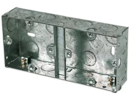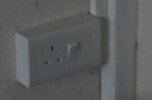- Joined
- 6 Mar 2024
- Messages
- 1
- Reaction score
- 0
- Country

I went to change an old socket with something newer in the kitchen. I noticed it has 4 cables going in, from the wiring colour I can see the original wiring red and black live and neutrals must be the ring and then there are two newer cables blue and brown live and neutrals.
Looking at it the new cables feed new above counter sockets on one side of the kitchen and one under the stairs socket, they are in trunking above the wall cabinets and then drop down behind the plaster to the sockets. By the looks of it they have tried to extend the ring but made a figure of 8.
I was wondering if I tested the all the live, neutral and cpcs for continuity and providing it was the main ring and another attempted ring if I could connect one leg of the actual ring and one of the attempted ring together in wagos and then the the other two into the socket if this would be ok to do?
Looking at it the new cables feed new above counter sockets on one side of the kitchen and one under the stairs socket, they are in trunking above the wall cabinets and then drop down behind the plaster to the sockets. By the looks of it they have tried to extend the ring but made a figure of 8.
I was wondering if I tested the all the live, neutral and cpcs for continuity and providing it was the main ring and another attempted ring if I could connect one leg of the actual ring and one of the attempted ring together in wagos and then the the other two into the socket if this would be ok to do?


